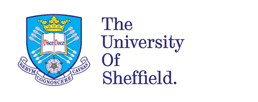
Jenny Brynjarsdottir and Anthony O’Hagan
Case Western Reserve University, USA and School of Mathematics and Statistics, University of Sheffield, UK
Publication details: Inverse Problems, 30, 114007 (24pp). November 2014.
Science-based simulation models are widely used to predict the behavior of complex physical systems. It is also common to use observations of the physical system to solve the inverse problem, i.e. to learn about the values of parameters within the model, a process often called calibration. The main goal of calibration is usually to improve the predictive performance of the simulator but the values of the parameters in the model may also be of intrinsic scientific interest in their own right.
In order to make appropriate use of observations of the physical system it is important to recognise model discrepancy, the difference between reality and the simulator output. We illustrate through a simple example that an analysis that does not account for model discrepancy may lead to biased and over-confident parameter estimates and predictions.
The challenge with incorporating model discrepancy in statistical inverse problems is the confounding with calibration parameters, which will only be resolved with meaningful priors. For our simple example, we model the model-discrepancy via a Gaussian Process and demonstrate that by accounting for model discrepancy our prediction within the range of data is correct. However, only with realistic priors on the model discrepancy do we uncover the true parameter values. Through theoretical arguments we show that these findings are typical of the general problem of learning about physical parameters and the underlying physical system using science-based mechanistic models.